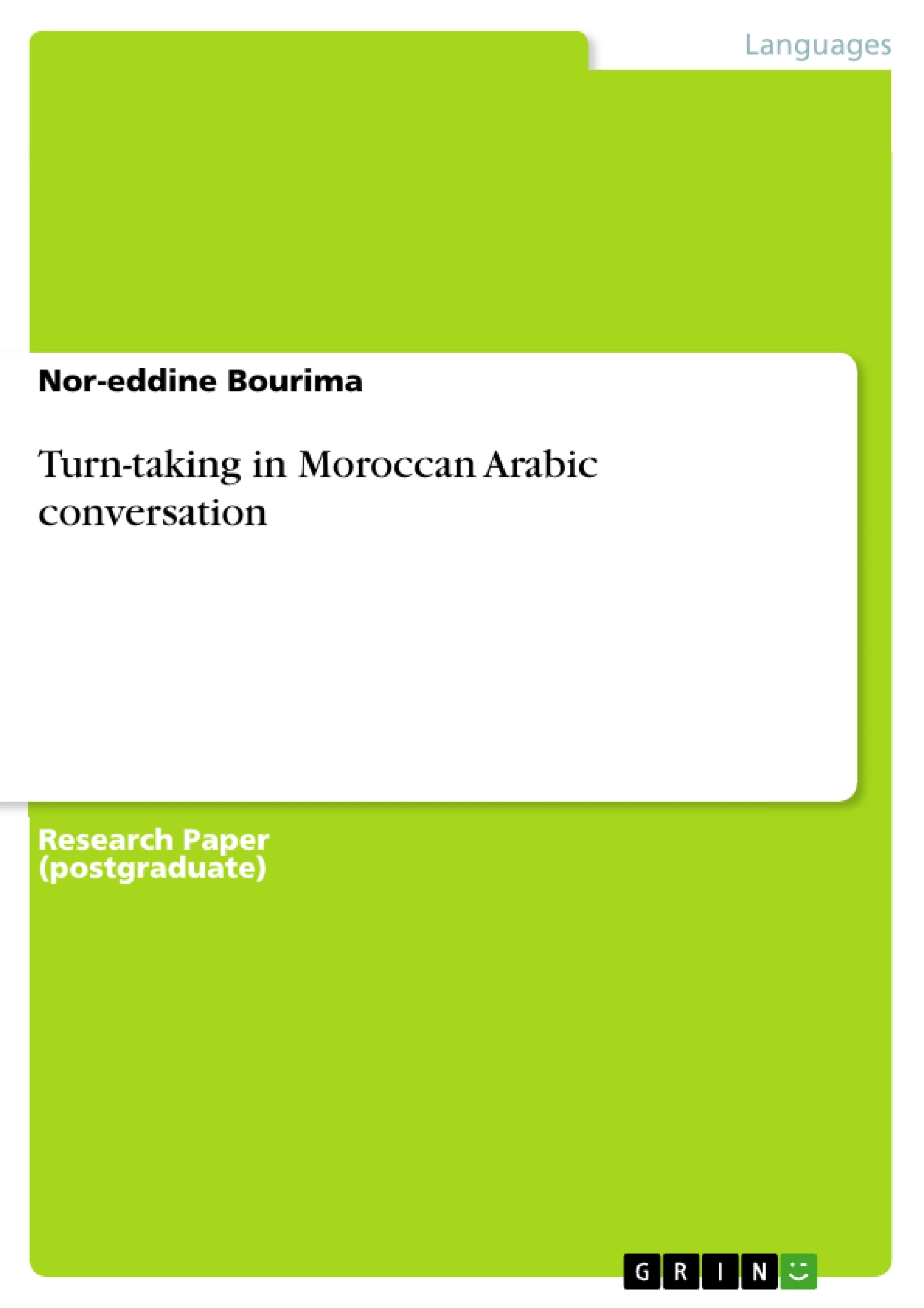In this article, I shall consider the organisational principle of turn taking in Moroccan Arabic conversational materials. Granted that the structure of a conversation is essentially interactional, the turn-taking principle is thus- the most likely determinant of this structure. Considering the fact that conversation, by definition, involves two or more persons, the distribution of talk among the participants is not merely random. It is governed by turn-taking norms which determine who talks, when, and for how long. Therefore, it is the aim of this chapter to examine the different aspects of turn-taking.
Inhaltsverzeichnis (Table of Contents)
- I: Turn-taking system: A review
- I.1: Turn Constructional Component
- 1.2: Turn Allocational Component
- 1.3 The signalling view of turn-taking
- 1.4: Further clarifications on "turn"
- II: A Descriptive study of Turn-Taking in Moroccan Arabic
- II.1: Turn-Selection
- II.1.2: Next-Speaker Selection
- II.1.2: Next-Speaker Selection in Dyads
- II.2: SELF-SELECTION
Zielsetzung und Themenschwerpunkte (Objectives and Key Themes)
This article examines the organizational principle of turn-taking in Moroccan Arabic conversations. It aims to explore how the distribution of talk among participants is governed by turn-taking norms and how these norms influence the structure of conversation.
- The role of turn-taking in conversational organization
- The interplay between turn-taking and social factors, such as politeness and face work
- The concept of "turn" and its various components
- The influence of interactional features on turn-taking
- The application of turn-taking theory to Moroccan Arabic conversations
Zusammenfassung der Kapitel (Chapter Summaries)
The first chapter provides a comprehensive review of the turn-taking system, examining its theoretical foundations and key concepts. It discusses the work of Sacks, Schegloff, and Jefferson, highlighting their contributions to understanding the mechanisms of turn-taking in conversation.
The second chapter delves into a descriptive study of turn-taking in Moroccan Arabic conversations. It analyzes the different aspects of turn-selection, including next-speaker selection and self-selection, providing insights into the specific features of turn-taking in this language variety.
Schlüsselwörter (Keywords)
Turn-taking, conversational organization, Moroccan Arabic, interactional features, politeness phenomena, face work, transition relevance place, turn-constructional unit, next-speaker selection, self-selection.
- Quote paper
- Nor-eddine Bourima (Author), 2016, Turn-taking in Moroccan Arabic conversation, Munich, GRIN Verlag, https://www.grin.com/document/341140



